If you’re new to woodworking, measuring and cutting wood at precise angles can be a daunting task. A 45-degree angle cut is a common cut used in many woodworking projects, such as creating frames or molding. But how do you measure and cut a 45-degree angle cut in wood?
First, you’ll need the right tools. A miter saw is the most common tool used for cutting 45-degree angles in wood. It’s a power tool that allows you to make precise cuts at various angles. You’ll also need a measuring tape, a pencil, and safety gear such as safety glasses and ear protection.
Once you have your tools, it’s time to measure and mark your wood. Measure the length of the wood you want to cut and mark it with a pencil. Then, use your measuring tape to find the halfway point of the wood and mark it with another pencil line. This will be the point at which you’ll make your 45-degree angle cut. The next step is to adjust your miter saw to a 45-degree angle and carefully cut along the marked line. With practice, you’ll be able to make precise 45-degree angle cuts in no time.
Understanding 45-Degree Angle Cuts
If you’re new to woodworking, you may be wondering what a 45-degree angle cut is and why it’s important. Simply put, a 45-degree angle cut is a diagonal cut made on a piece of wood at a 45-degree angle. This type of cut is commonly used in woodworking to create beveled edges, miter joints, and other angled cuts.
To make a 45-degree angle cut, you will need a combination square, a pencil, and a saw. The easiest way to make this cut is by using an electric miter saw, as it allows you to adjust the angle of the blade to precisely 45 degrees. However, if you don’t have a miter saw, you can still make a 45-degree angle cut using a handsaw or circular saw.
When measuring for a 45-degree angle cut, it’s important to measure to the long end of the miter. This means that if you need a 10-inch piece of wood with a 45-degree angle cut, you should measure 10 inches from the long end of the miter and mark the cut line with your pencil.
It’s also important to remember that a 45-degree angle cut is an opposite cut, which means that the angle of the cut will be in the opposite direction of the angle of the saw blade. To ensure that you make a clean and accurate cut, use a saddle square or combination square to guide your saw along the cut line.
In summary, understanding how to measure and cut a 45-degree angle cut in wood is an essential skill for any woodworker. With the right tools and techniques, you can create beveled edges, miter joints, and other angled cuts with precision and ease.
Tools Needed for a 45-Degree Angle Cut
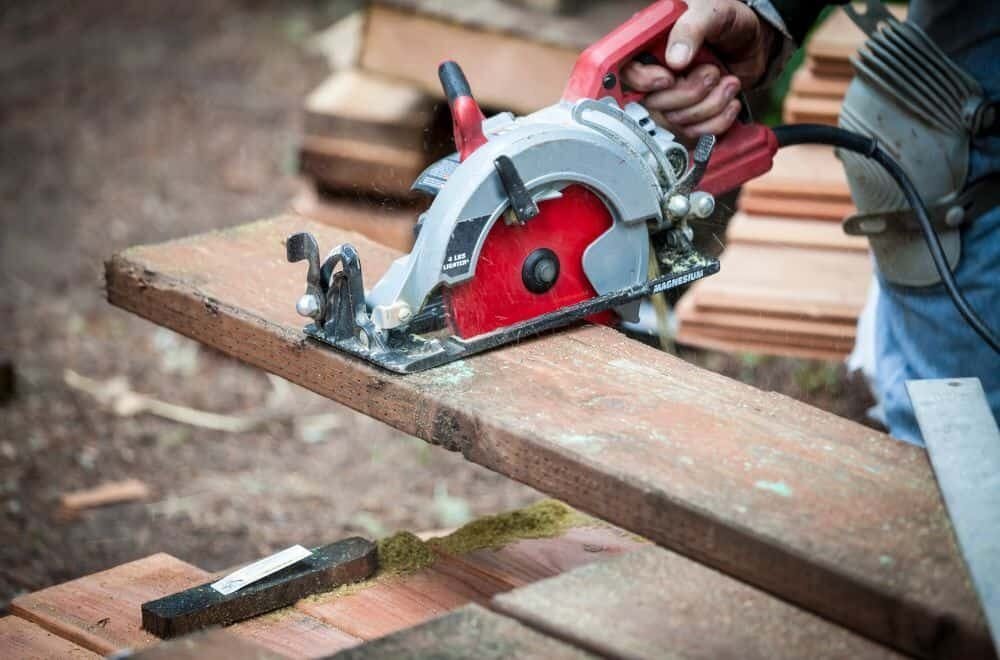
If you’re planning to make a 45-degree angle cut in wood, you’ll need to have the right tools for the job. Here are the tools you’ll need:
Measuring Tools
To make a precise 45-degree angle cut, you’ll need to measure and mark the wood accurately. Here are the measuring tools you’ll need:
- Combination square: This is a versatile tool that you can use to measure angles and mark straight lines. It’s essential for making accurate 45-degree angle cuts.
- Tape measure: You’ll need a tape measure to measure the length of the wood and mark the point where you want to make the cut.
- Pencil: You’ll need a pencil to mark the wood where you want to make the cut. Make sure the pencil is sharp so that the mark is clear and accurate.
Cutting Tools
Once you’ve measured and marked the wood, you’ll need to cut it at a 45-degree angle. Here are the cutting tools you’ll need:
- Miter saw: A miter saw is the best tool for making a 45-degree angle cut. It’s designed to make angled cuts, and you can set it to cut at a precise angle. You can use a miter saw to make crosscuts, bevel cuts, and compound cuts.
- Table saw: If you don’t have a miter saw, you can use a table saw to make a 45-degree angle cut. You’ll need to use a miter gauge to guide the wood through the saw blade at the correct angle. Make sure the saw blade is sharp and clean to ensure a smooth and accurate cut.
- Circular saw: A circular saw can also be used to make a 45-degree angle cut. You’ll need to adjust the saw blade to the correct angle and use a straight edge to guide the saw through the wood. Make sure the saw blade is sharp and clean to ensure a smooth and accurate cut.
With these tools, you’ll be able to make a precise 45-degree angle cut in wood. Make sure you take the time to measure and mark the wood accurately, and use the right cutting tool for the job.
Measuring a 45-Degree Angle
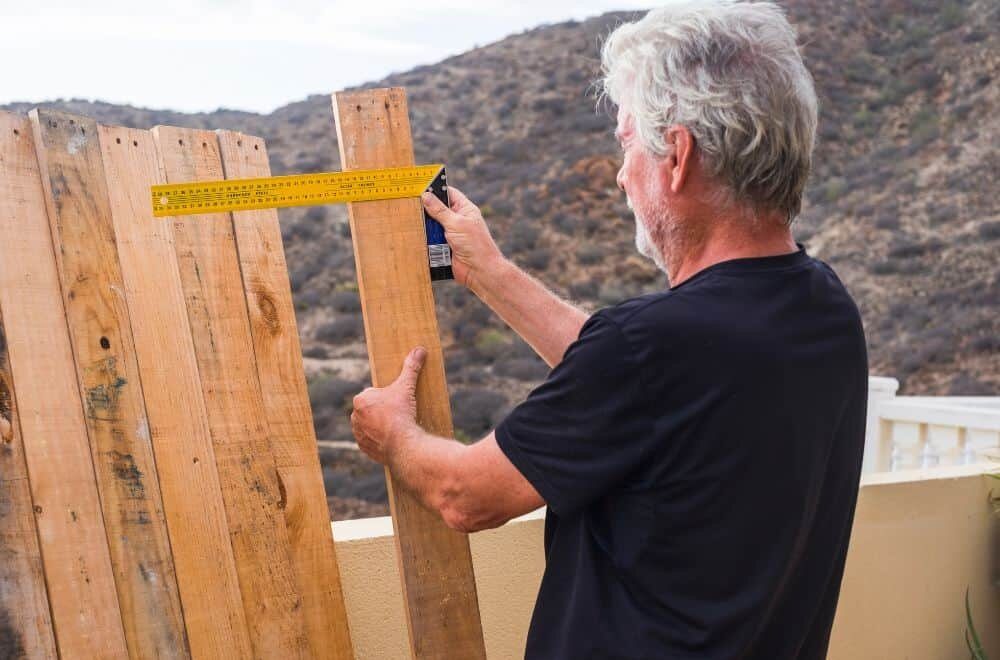
Measuring a 45-degree angle is essential if you want to make precise cuts in wood. There are different tools and methods you can use to measure a 45-degree angle, and we will discuss some of them below.
Using a Combination Square
A combination square is a versatile tool that can help you measure angles, distances, and depths. To measure a 45-degree angle with a combination square, follow these steps:
- Place the combination square on the wood, aligning the long side with the edge you want to cut.
- Rotate the square until the 45-degree mark on the ruler aligns with the edge of the wood.
- Use a pencil to draw a line along the edge of the ruler.
Using a Protractor
A protractor is a tool that measures angles. To measure a 45-degree angle with a protractor, follow these steps:
- Place the protractor on the wood, aligning the base with the edge you want to cut.
- Rotate the protractor until the 45-degree mark aligns with the edge of the wood.
- Use a pencil to draw a line along the edge of the protractor.
Using a Bevel Gauge
A bevel gauge is a tool that measures and transfers angles. To measure a 45-degree angle with a bevel gauge, follow these steps:
- Place the bevel gauge on the wood, aligning the base with the edge you want to cut.
- Adjust the bevel gauge until the blade aligns with the edge of the wood.
- Tighten the bevel gauge.
- Use a pencil to draw a line along the blade of the bevel gauge.
Using a Speed Square
A speed square is a tool that helps you make square cuts and angles. To measure a 45-degree angle with a speed square, follow these steps:
- Place the speed square on the wood, aligning the base with the edge you want to cut.
- Rotate the square until the 45-degree mark aligns with the edge of the wood.
- Use a pencil to draw a line along the edge of the square.
In conclusion, measuring a 45-degree angle is not difficult if you have the right tools and know-how. You can use a combination square, protractor, bevel gauge, or speed square to measure a 45-degree angle. Choose the tool that works best for you and your project, and always double-check your measurements before making any cuts.
Marking the Wood for a 45-Degree Cut
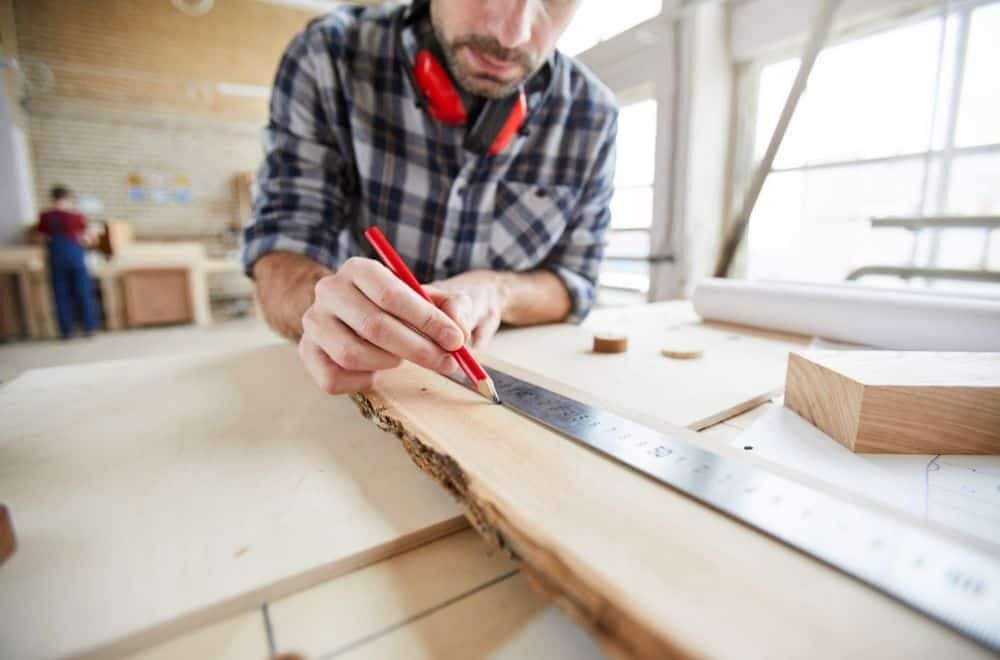
When it comes to measuring and cutting a 45-degree angle cut in wood, marking the wood properly is crucial to ensuring a precise and accurate cut. Here are a few steps to follow when marking the wood for a 45-degree cut:
- Measure the Length: First, measure the length of the wood piece you want to cut. Use a measuring tape or ruler to get an accurate measurement.
- Mark the Wood: Once you have measured the length, mark the wood where you want to make the cut. Use a pencil to make a visible mark that you can easily see.
- Measure the Angle: Next, you need to measure the angle of the cut. To do this, use a protractor or combination square. Place the protractor or square on the wood at the mark you made and align it with the edge of the wood. Then, adjust it to a 45-degree angle.
- Mark the Angle: Once you have measured the angle, mark it on the wood using a pencil. Make sure the mark is visible and easy to see.
- Double Check: Before making the cut, double-check your measurements and marks to ensure they are accurate. This will help you avoid any mistakes and ensure a precise cut.
By following these steps, you can accurately mark the wood for a 45-degree cut and ensure that your cut is precise and accurate. Remember to always measure twice and cut once to avoid any mistakes.
Cutting the Wood at a 45-Degree Angle
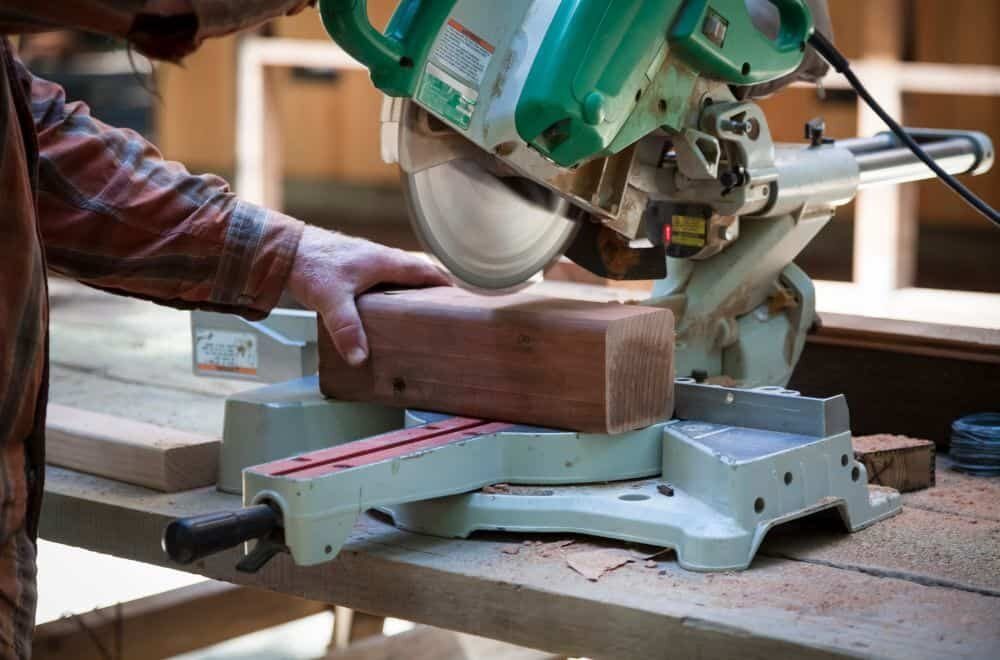
Now that you have your wood marked at a 45-degree angle, it’s time to cut it. The easiest way to do this is by using an electric miter saw. Here’s how you can do it:
- Set your combination square on the 45-degree mark and draw the cut line across the wood.
- Adjust the miter saw to 45 degrees.
- Align the saw blade with the cut line you drew.
- Gently guide the saw into and through the wood.
Make sure to take your time and be careful while cutting the wood. If you rush the process, you may end up with a crooked cut or even injure yourself.
If you don’t have a miter saw, you can use a circular saw or a handsaw to make the cut. However, these methods may not be as accurate as using a miter saw.
Another thing to keep in mind is that the thickness of the wood can affect how the cut turns out. Thicker wood may require multiple passes with the saw to get a clean cut.
Remember to always wear appropriate safety gear, such as safety glasses and ear protection, when using power tools.
Safety Precautions During Cutting

When working with power tools, it is important to prioritize safety. Here are a few precautions you should take when cutting a 45-degree angle in wood:
Wear Protective Gear
Before you begin cutting, make sure you are wearing the appropriate protective gear. This includes safety glasses or goggles to protect your eyes from flying debris, earplugs to protect your hearing from loud noises, and a dust mask to prevent inhalation of sawdust.
Secure the Wood
Make sure the wood you are cutting is securely clamped or held in place to prevent it from moving or slipping during the cut. This will help you maintain control over the saw and prevent accidents.
Use the Right Blade
Make sure you are using the appropriate blade for the type of cut you are making. For a 45-degree angle cut, a crosscut blade or a combination blade with a high tooth count is recommended.
Mind the Blade Guard
Always make sure the blade guard is in place and functioning properly before you begin cutting. The blade guard helps protect your fingers from the blade and also helps prevent debris from flying out of the saw.
Keep Your Hands Clear
When making the cut, keep your hands well clear of the blade and the path of the saw. Use a push stick or other tool to guide the wood through the saw, if necessary.
By following these safety precautions, you can help ensure a safe and successful 45-degree angle cut in wood.
Troubleshooting Common Issues
Cutting a 45-degree angle in wood may seem simple, but it can be frustrating when things don’t go as planned. Here are some common issues you may encounter and how to troubleshoot them:
Uneven Cut
If your 45-degree angle cut is uneven, it could be due to a few reasons. First, make sure your saw blade is sharp and in good condition. Dull blades can cause jagged cuts. Next, check that your wood is clamped securely in place and not moving during the cut. Finally, ensure that your saw is properly aligned and calibrated for a 45-degree cut.
Inaccurate Angle
If your 45-degree angle is not accurate, it may be due to incorrect measurements or saw adjustments. Double-check your measurements and use a combination square to ensure accuracy. If your saw is not calibrated correctly, adjust it accordingly and recheck your cut.
Tear-Out
Tear-out occurs when the wood fibers splinter or tear during the cut, leaving an unsightly finish. To prevent this, use a sharp saw blade with a high tooth count. You can also use masking tape on the wood surface to prevent splintering. Another option is to make a scoring cut before the 45-degree cut to weaken the wood fibers and reduce tear-out.
Safety Concerns
Always prioritize safety when using power tools. Wear safety glasses and ear protection, and keep your hands and fingers away from the blade at all times. Use a push stick to guide the wood through the saw and never force the cut. If you are unsure or uncomfortable with the process, seek guidance from a professional or experienced woodworker.
Tips for a Perfect 45-Degree Angle Cut
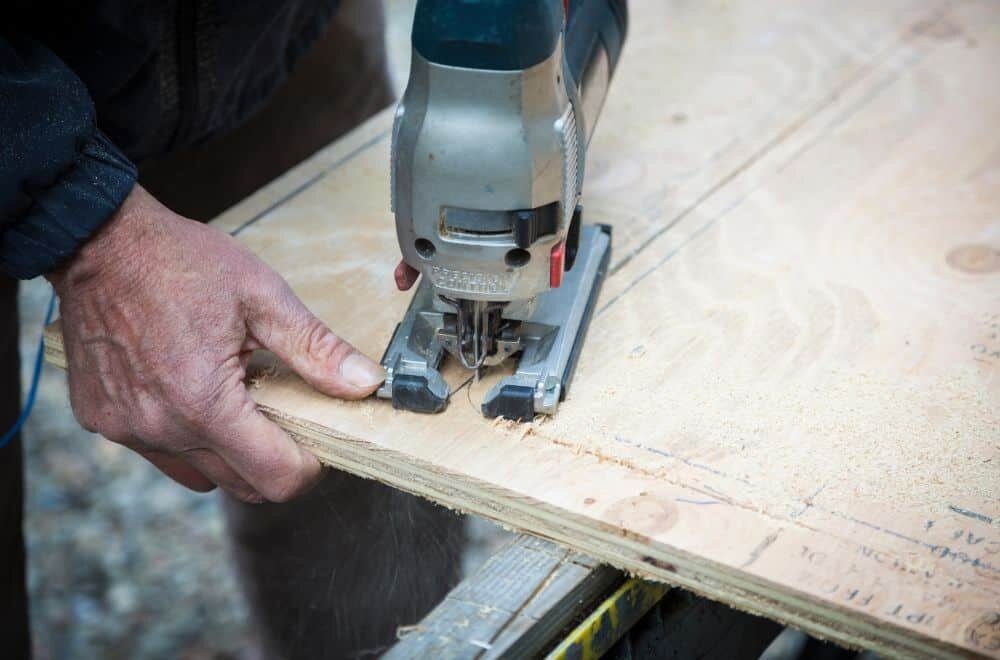
Cutting a 45-degree angle in wood can be a challenging task, but with the right tools and techniques, you can achieve a perfect cut every time. Here are some tips that will help you get the job done:
Use a Combination Square
A combination square is an essential tool for measuring and marking angles. To cut a 45-degree angle, set your combination square on the 45-degree mark and draw the cut line on the wood. This will ensure that your cut is accurate and straight.
Use an Electric Miter Saw
An electric miter saw is the best tool for cutting a 45-degree angle in wood. Adjust the miter saw to 45 degrees, align it to the cut line, and gently guide the saw into and through the wood. Make sure to wear safety goggles and gloves while using the saw.
Check Your Measurements
Before making the cut, double-check your measurements to ensure that they are accurate. Use a tape measure or ruler to measure the length of the wood and mark the 45-degree angle with a pencil. This will help you avoid mistakes and ensure that your cut is precise.
Practice on Scrap Wood
If you are new to woodworking, it is a good idea to practice cutting 45-degree angles on scrap wood before working on your project. This will help you get a feel for the saw and ensure that you are comfortable with the process before making the cut on your final piece.
Take Your Time
Cutting a 45-degree angle in wood requires patience and precision. Take your time and make sure that you are comfortable with each step of the process before moving on to the next. Rushing can lead to mistakes and a less-than-perfect cut.
By following these tips, you can achieve a perfect 45-degree angle cut in wood every time. Remember to always prioritize safety and take your time to ensure a quality result.
Frequently Asked Questions
What are some tips for cutting a 45-degree angle with a circular saw?
When using a circular saw to cut a 45-degree angle, it’s important to make sure that the saw blade is set to the correct angle. You can use a protractor or angle finder to measure the angle of the blade. It’s also important to use a guide to ensure that your cut is straight and accurate. You can use a straight edge or a piece of scrap wood as a guide.
How can I measure and cut a 45-degree angle with a tape measure?
To measure and cut a 45-degree angle with a tape measure, you can use the Pythagorean theorem. Measure the length of the side you want to cut, then divide it by the square root of 2. This will give you the length of the other side of the triangle. Use this measurement to mark your cut line, then use a saw to make the cut.
Is there an angle cut calculator that can help me with cutting 45-degree angles?
Yes, there are several angle cut calculators available online that can help you calculate the correct angle for your cut. Simply enter the length of the side you want to cut, and the calculator will give you the correct angle to use.
What is the best way to measure a 45-degree angle on wood?
The easiest way to measure a 45-degree angle on wood is to use a combination square. Set the square to 45 degrees, then use it to mark your cut line. You can also use a protractor or angle finder to measure the angle.
How can I cut trim at a 45-degree angle?
To cut trim at a 45-degree angle, you can use a miter saw or a coping saw. If using a miter saw, set the saw to a 45-degree angle and make your cut. If using a coping saw, cut along the profile of the trim at a 45-degree angle.
Are there any techniques for cutting a 45-degree angle without a miter saw?
Yes, there are several techniques for cutting a 45-degree angle without a miter saw. You can use a circular saw with a guide, a handsaw with a miter box, or a jigsaw with a bevel cut. It’s important to take your time and make sure that your cut is accurate.